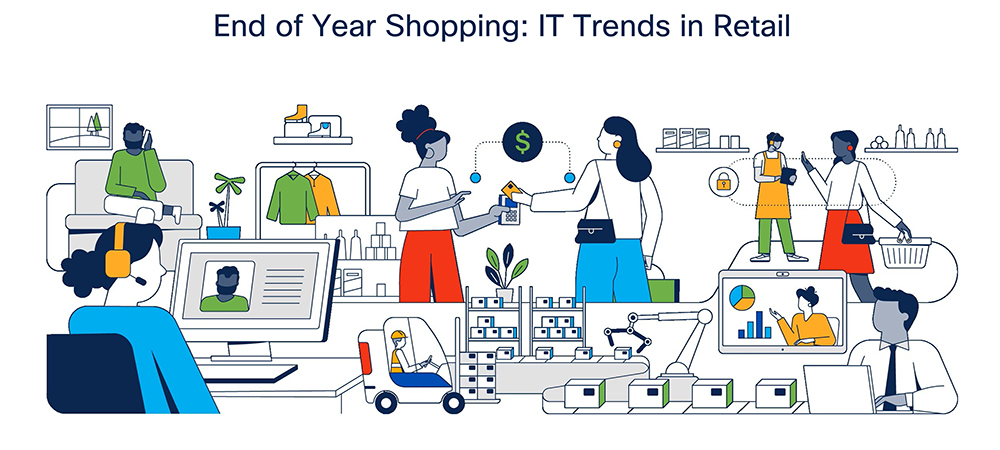With the holiday season in full motion and retailers gearing up to attract shoppers with last-minute deals, managing a surge in traffic and an increasing volume of cyberattacks can present a myriad of challenges.
As criminals target vulnerabilities in the infrastructure of both physical and digital stores, Cisco reveals the top technology investments designed to help retailers maintain consumer trust and ensure a successful commercial period.
Brands need to quickly prioritize the protection of consumer information – particularly given the detrimental impact a data leak can have on both consumer and employee trust. In a physical store, retailers face pressure to identify and reduce inventory shrinkage and other losses caused by theft, fraud and clerical errors, whilst also providing a safe environment for their staff and customers.
Leveraging advancements in space monitoring and Artificial Intelligence
Many retailers are deploying space monitoring and tracking technologies, while others are also implementing AI-based behavior detection. These technologies can be useful tools for both security and personalization.
Retailers are often looking for ways to achieve the seamless experience of e-commerce in their stores. By using smart cameras that incorporate AI models, they can identify congestion hot spots or cold spots where products are less popular, as well as understand behavior to improve the customer journey. Alongside this, they can optimize stock levels based on past or predicted demand and map a customer’s in-store browsing either through in-store video or smart devices.
Addressing the skills gap
As retailers look to manage cybersecurity needs and mitigate risk, upskilling and retraining staff with key skills is essential. Whether working in merchandising, compliance, operations, information security, digital, or data – it is paramount that employees across all departments adapt to the constantly changing market through education. By delivering the right training content for both physical client-facing staff and back-office employees, a range of issues from theft in store to phishing attacks can be reduced or ideally avoided altogether.
Security strategy and management
Faced with a complex and highly adaptive threat landscape, retailers are increasingly opting for outsourced security strategy and management. This is understandable, given the complex nature of data protection.
Many retailers globally are concerned about the data governance and security implications of moving highly sensitive data to a cloud security system. Data leakage and reputational damage are also high on the list of concerns, showing that protecting customer data is an imperative for retailers. Competitive advantage is hard fought and data breaches and leaks can see retailers lose the trust they carefully build with their customers.
Across the board, but particularly at this peak time of year for retailers, an integrated, cloud-based platform should be sought out to prevent these types of incidents by managing distributed workforces at scale. It can keep data safe on-premises, in the cloud and in hybrid environments across the company’s entire ecosystem, while detecting threats quickly throughout an organization.
Physical and online retail environments need to focus in on an ongoing, scalable strategy; one that can bend and flex under pressure – not a collection of solutions that are applied and removed depending on the time of year. Too many disparate ideas and solutions will end up being confusing for staff and could play into the hands of the very people retailers want to stop.


